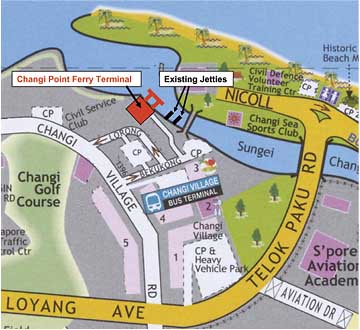March 18, 2005
Ubin Swee Chioh Aquaculture's move to yield 500 tonnes of fish annually for local market
By Chang Ai-lien
SCIENCE CORRESPONDENT
ONE of the biggest fish breeders here has ambitious plans to franchise a high-tech breeding operation that will produce more than 500 tonnes of fish a year for the local market.
Swee Chioh Aquaculture, well-known for its skills in getting notoriously difficult marine fish to multiply, will set up 10 big-cage farms off Pulau Ubin and franchise them to other companies while providing the expertise, equipment and food supply. Each farm is expected to cost about $400,000 to set up.
The company also has its eye on opening farms in Vietnam, which it sees as a gateway to the fish-hungry China market.
It will be its first major foray overseas.
And as a first step to realising its plans, Swee Chioh, which already produces 250,000 baby fish called fingerlings every month which it breeds and exports to fish farms, intends to double production this year.
The farms in its Ubin venture will be deeper and larger than what it has now, it said, and there will be centralised feed mills and management systems.
Managing director Yi Yuan Wah said: 'We're developing an integrated farming system where we have expertise in everything from hatcheries and brood stock management, to cage-farming, research and trading.
'We want to go big, and do it in an industrialised, commercialised manner, rather than like the small players you see in Malaysia and Indonesia who do not enjoy economies of scale.'
It is currently working with local fish specialists to better harvest copepods, tiny aquatic creatures that form an important part of the baby fishes' diet.
In Vietnam, it plans to grow the fingerlings it exports there to full size, producing about 1,000 tonnes of tiger grouper fish a year, on seven farms there.
Explaining the choice of fish, Mr Yi said: 'The grouper is a sought-after fish, and it's hardy but not easy to breed. That's why the fish are expensive.'
Breeding the fish calls for years of experience, particularly in fish behaviour.
The tiger grouper is a voracious eater when small, and a group of 5,000 can be reduced to just 500 within days because the fish eat each other.
'We've learnt to feed them continuously, so they lose the urge to do so,' said Mr Yi.
The Agri-Food and Veterinary Authority of Singapore (AVA) said that the company's expansion will help Singapore's efforts to be self-sufficient in food production.
The Republic is now leveraging on its edge in aquaculture and hatchery research and development to enhance productivity and efficiency in fish farming.
At the AVA's $33 million Marine Aquaculture Centre on St John's Island, researchers are working on perfecting state-of-the-art techniques for large-scale fish breeding and rearing, in the hope that this work will help produce almost half the fish people eat here.
By working with commercial partners, AVA aims to increase the amount of fish and seafood produced here to 40,000 tonnes a year within the next decade, or 40 per cent of what people eat.
Only 5,000 tonnes is produced locally now.
















